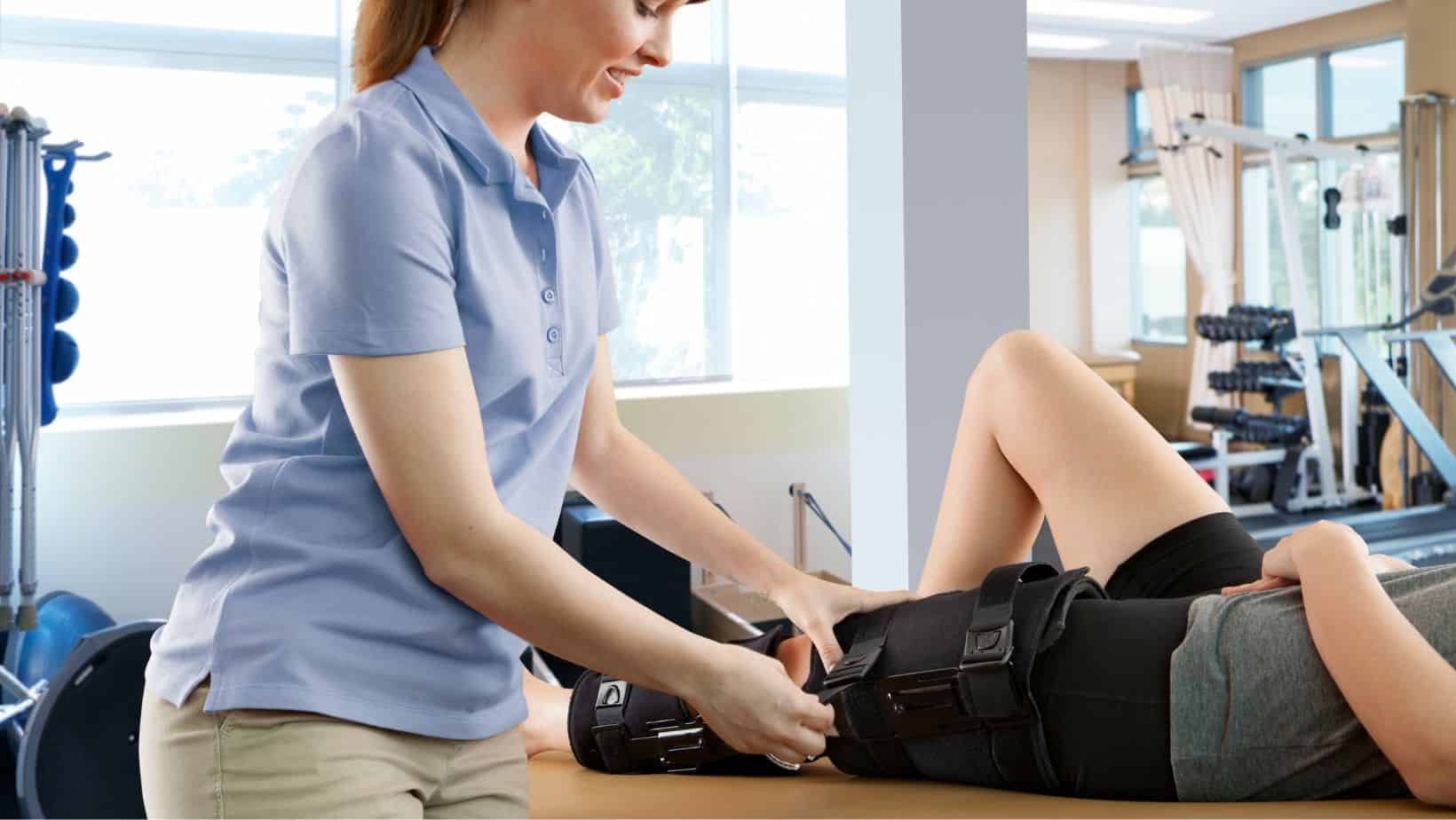Patellar Tendonitis (Jumper’s Knee)
Read More >
A quadriceps tendon tear is a relatively rare injury. They usually occur in individuals over 40, with men being at a much higher risk than women. A tear is twice as likely to occur on the non-dominant leg.
In most cases of quadriceps tendon tears, there is a contributing factor that harms the elasticity of tissues. It can be an infectious, inflammatory or metabolic condition, drug use such as corticosteroids or following immobility such as surgery.
Quadriceps tendon tears are a recorded complication following arthroplasty, such as a total knee replacement. One study reported a 0.1% prevalence of 24 out of 23,000 people (Ryan et al, 2005).
A quadriceps tendon tear can be complete or partial, meaning the whole tendon can separate, or only part is injured and torn. A quadriceps tendon tear will have a sudden onset, at which time the individual will feel sudden pain at the front of their knee and a tearing or pop sensation.
Immediately after the injury, quadriceps tendon tear symptoms include swelling that will develop quickly at the front of the knee above the patella. This swelling can be excessive and can make it difficult to assess accurately.
Bruising will develop at the front of the knee quickly after the tear has occurred to the injury and the release of blood into the surrounding tissues.

The quadriceps muscle will also be painful after a significant tear injury and may feel cramping.
If assessed, it is usually possible to feel a palpable gap in the tendon where the tear is.
Functionally, the person will find it difficult to straighten their knee, and it will be painful to straighten against any resistance, such as the weight of their leg or the resistance of the examiner’s hand.
As with most diagnoses, there is no single specific quadriceps tendon tear test that can conclusively diagnose this injury. This injury is diagnosed using a cluster of different findings on examination.
Factors that increase the risk of this injury are present, such as metabolic, inflammatory or infectious conditions.
The previous use of corticosteroids, or recent surgery and immobility, then the index of suspicion of a tendon tear should be high.
Additional confirmation of diagnosis can come from ultrasound or MRI imaging but is not commonly needed if clinical examination and assessment are clear and there is high confidence in the diagnosis.
MRI or ultrasound are commonly used when the diagnosis is unclear or to quantify the degree of the injury and grade of the tear.
The information gained by these radiological scans can help determine the likely recovery time and outcomes for the individual.
Treatment for a quadriceps tendon tear can be conservative in many cases.
In the acute phase, conservative treatment will consist of a period of immobility of the knee with it in a brace, held in a nearly straight position, often about 10º of knee bend.
In this early phase, it is recommended to be non-weight-bearing. This can be gradually increased, and the angle that the knee is allowed to move and bend will gradually increase.
This usually occurs over a 6-8 week period, but depending on the specific injury and health of the individual.
Surgery is the best choice for some cases, often when the tear is severe or complete and if the individual is in good health to have a successful recovery from surgery.
Surgery for a quadriceps tendon tear involves operating on the tendon to reattach the torn portion.

With both surgical and conservative treatment options, intensive physical therapy will be needed to strengthen the quadriceps. This is usually started with static quadriceps exercises and increases to through range.
Weight-bearing, walking and other functional movements, such as squatting, follow this. The final phase will be returning to running and other sports if this is appropriate.
A quadriceps tendon tear may go untreated if misdiagnosed. This can occur with greater frequency if the injury is not assessed in the acute phase, as some of the symptoms and clinical assessments can become less clear.
Without effective treatment, the full function of the quadriceps muscle and quadriceps tendon may never be regained. Actions like straightening the knee, walking, lowering or getting up from a chair, or climbing and descending stairs may always be difficult.
Yes. A quadriceps tendon can heal itself. But, it needs to be positioned well and have a healthy environment to heal effectively.
If the quadriceps tendon is overly stretched, such as if the knee is not placed in a restricted brace, then it may not be possible to heal effectively. Similarly, if the individual is in poor health, it may slow healing.
This article is written by James McCormack, a Lower Limb Specialist who is an expert in treating Quadriceps Injuries.
This is not medical advice. We recommend a consultation with a medical professional such as James McCormack if you are experiencing any of the symptoms discussed in this article. James offers Online Physiotherapy Appointments weekly and face-to-face appointments in his London clinic.